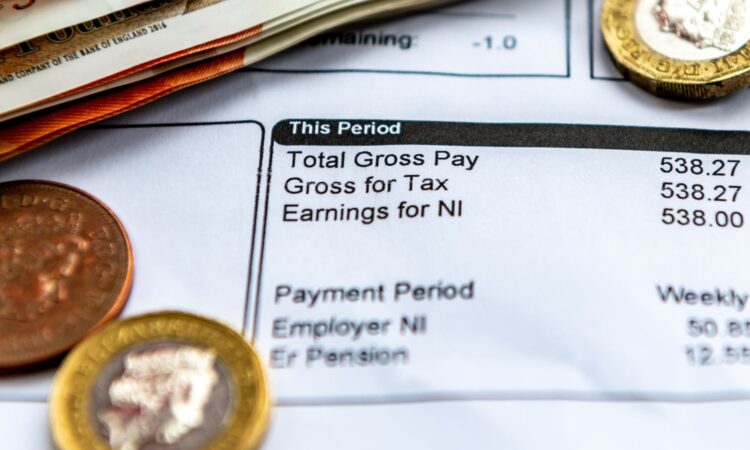
A weaker than expected easing in the pace of pay rises means real earnings growth, when inflation is taken into account, is at its highest rate in almost two and a half years, according to the latest official figures.
The Office for National Statistics (ONS) said average regular pay, excluding bonuses, stood at 6% in February.
In real terms, when the rate of inflation is reflected, pay growth by the same measure was 2.4% – its highest level since July 2021, the report said.
The base figure was above the 5.8% expected by economists and only down from the 6.1% sum registered the previous month.
There was no shift in the data which included bonuses on a rolling three-month basis.
The figures, while welcome on the face of its for struggling households, will make for worrying reading at the Bank of England which is assessing the timing for a long-awaited interest rate cut amid its battle against inflation.
It has wanted to see the pace of wage growth ease for fear that high earnings risk stoking demand, and therefore prices, across the economy.
The wider ONS figures showed a rise in the UK’s unemployment rate to 4.2% from 3.9% though the statistics body continued to place a big health warning on the number due to continuing work on making the employment data more reliable.
ONS director of economic statistics, Liz McKeown, said: “Recent trends of falling vacancy numbers and slowing earnings growth have continued this month albeit at a reduced pace.
“But with the rate of inflation also slowing, real earnings growth has increased and is now at its highest rate in nearly two and a half years.
“At the same time, we are now seeing tentative signs that the jobs market is beginning to cool, with both a fall in the headline employment rate from our survey and a drop in the total number of people on payrolls from HMRC data.”
The Bank’s medicine of interest rate hikes since December 2021 to counter inflation have inflicted higher borrowing costs on businesses and consumers alike, exacerbating the financial pain from the very cost of living crisis it is trying to eradicate.
The latest inflation figures, due on Wednesday, are also expected to show further progress towards the Bank’s goals and the prospect of a rate cut from the current 5.25% level.
Economists polled by Reuters expect the consumer prices index (CPI) measure of inflation slowed to an annual rate of 3.1% in March.
That is down from the current 3.4%.
The latest data does not mean that overall prices are falling but rising at a slower pace than they were. Sky’s Ed Conway has more.
Energy price shifts are widely tipped to take CPI below the Bank’s 2% target soon after but policymakers have flagged concerns that elements of inflation will push back up later in the year.
It is a reason why economists and financial markets are split over the timing for a possible rate cut.
Some see June while others predict the Bank will wait until August as so-called upside risks, such as through oil price spikes caused by the instability in the Middle East, are monitored.
The Bank of England’s action to tame price growth was the major factor behind the economy slipping into recession in the second half of last year.
Data since then has shown a return to meagre growth.
This breaking news story is being updated and more details will be published shortly.
Please refresh the page for the fullest version.
You can receive Breaking News alerts on a smartphone or tablet via the Sky News App. You can also follow @SkyNews on X or subscribe to our YouTube channel to keep up with the latest news.






